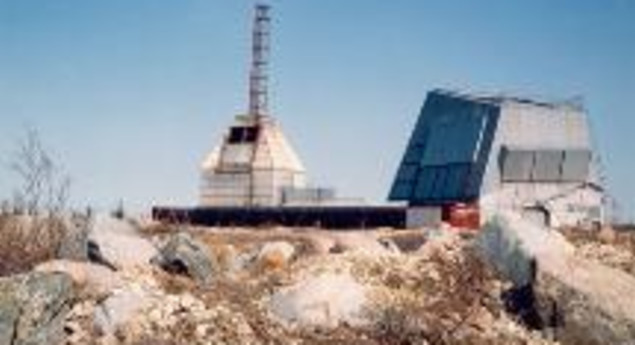DESCRIPTION OF HISTORIC PLACE
Churchill Rocket Research Range National Historic Site of Canada is located on the 59th parallel, a few kilometres east of the town of Churchill, Manitoba, on the shores of Hudson Bay. The installation is an immense wedge-shaped piece of land with facilities for launching, tracking and retrieving the rockets. Until the site closed in 1985, the area known as the range head provided the working base for launching and tracking rockets for research into the upper atmosphere. The designation refers to this area with its operations building, blockhouse, storage buildings and three indoor launching pads joined by walkways as well as the auroral observatory and radar tracking stations located nearby.
HERITAGE VALUE
Churchill Rocket Research Range was designated a national historic site of Canada in 1988 because:
- it was long Canada’s foremost upper atmosphere research centre; and
- it was a sounding rocket facility of international reputation.
The heritage value of Churchill Rocket Research Range lies in the completeness with which the cultural landscape of its range head portrays the nature and technology of Cold War rocket research in Canada. Value resides in the range head’s design, composition, functional disposition, scientific and technological equipment, site and setting, as well as those of its component buildings and structures.
Churchill Rocket Research Range was built by the United States Army under the aegis of Canada’s Defence Research Board in 1956. It launched its first rocket for research into the upper atmosphere in October 1956. Over the years, Canadian programs participated increasingly in rocket research at this centre, and it became a National Research Council of Canada (NRC) facility in 1964. This was the only facility in Canada for launching sounding rockets. The Black Brant rocket, designed and built in Canada, was first launched from this centre in 1959.
Source: Historic Sites and Monuments Board of Canada, Minutes, Spring 1988.
CHARACTER-DEFINING ELEMENTS
Key elements that contribute to the heritage value of the site include:
- the completeness of the cultural landscape of the range head;
- the spatial relationships of its special-purpose buildings and structures;
- its special-purpose buildings and structures in their as-found designs, materials and construction technology;
- surviving scientific equipment in its functional location, design and materials;
- the extensive tunnel network linking facilities on the site in its route, extent and original materials;
- the isolated location of the rocket research centre in northern Canada;
- viewscapes from the range head to the 160 km x 650 km wedge-shaped piece of land that historically constituted the research centre’s drop and recovery zone.
Earn 10 points!









